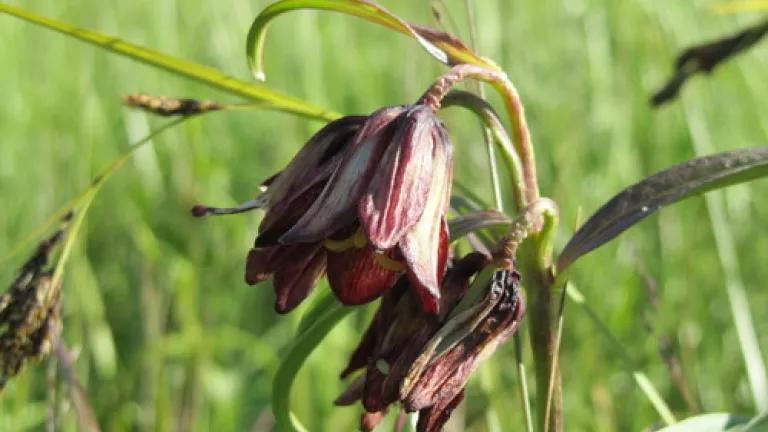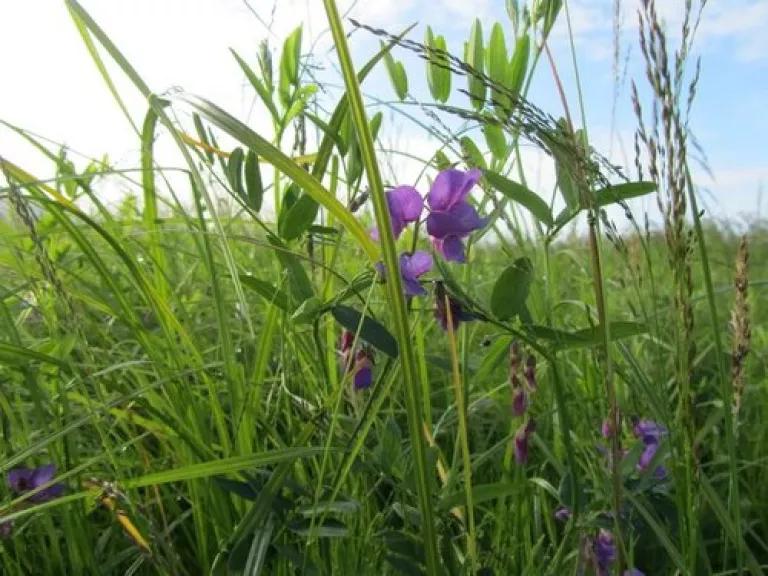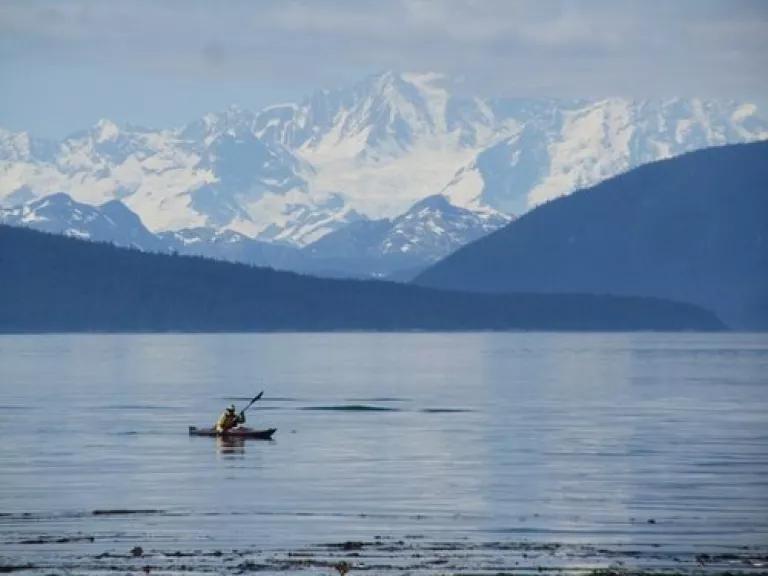
Last week I had the pleasure of traveling to the Tongass National Forest in Southeast Alaska, one of NRDC’s BioGems and a place we first helped save more than 35 years ago. As a mountain climber and sea kayaker, I have been awed by many of Alaska’s landscapes over the years, but there is something extraordinary about the Tongass.
The first thing that struck me was its vitality. Now that 98 percent of America’s old-growth forests have been logged in the lower 48 states, the Tongass is one of our last intact examples of ancient forest life.


But what is truly astonishing about the Tongass is its size. The forest stretches for nearly 500 miles along the coast and encompasses virtually all of Southeast Alaska—almost 17 million acres. The region’s private, state, and native lands, meanwhile, comprise less than 1 million acres.
The future of Southeast Alaska is largely in the hands of the U.S. Forest Service, which oversees the Tongass. For decades, NRDC has been fighting to make sure that the agency protects the forest’s pristine nature and supports sustainable economic development in the area.
Last month we won a major litigation victory when a federal judge in Alaska struck down a Bush-era attempt to exempt the Tongass from the National Roadless Rule. The Roadless Rule protects untouched national forest lands from almost all logging and harmful road development. Thanks to NRDC’s and our partners’ lawsuit, the Tongass will once again will have those protections.

Yet timber companies continue to try to break into the Tongass, and now miners are circling as well. With Tea Party leaders in Congress, a powerful Alaska delegation, and Southeast Alaska Native corporations interested in logging, the Tongass is in for a tough fight.
During my trip, I learned that despite this being a national forest, only about a third of the Tongass is actually forested—the rest is wetlands, rock, snow, ice, and gorgeous upland meadows. And those wooded lands, though very largely still intact, have been under pressure from clear cutting for decades.
After World War II, the federal government subsidized the establishment of two huge saw and pulp mills in Ketchikan and Sitka, as well as the construction of thousands of miles of forest road to access the trees. The U.S. taxpayer lost billions of dollars in these efforts, selling the trees for much less than the roads cost to build. At the peak of production, loggers cut 500,000,000 board feet a year, almost all from the best, biggest old growth trees in the forest.
NRDC’s involvement in fighting that logging dates to the early 1970s, when our founder John Adams and board member Mike McIntosh helped thwart plans for a third pulp mill. Then Chuck Clusen, who today leads our Alaskan Arctic advocacy, led a broad coalition campaigning for what became the 1980 Alaska Native Interest Lands Conservation Act (ANILCA).
Though I was only in college at the time, I testified in Congress in support of the law. My brothers and I had climbed in the Arrigetch Peaks of the Brooks Range and as some of the only outsiders to travel in the region, we knew firsthand how important it was to protect. Much of ANILCA’s huge set-aside was further north, but in the Tongass, the new law established two large wilderness areas, the Misty Fjords and Admiralty Island National Monuments. This designation ensured the preservation of over 3 million acres.
Yet after that law passed, clear cutting continued apace on the rest of the forest. In 1990 the Tongass Timber Reform Act saved another million acres. NRDC’s advocacy helped get one of the pulp mill contracts cancelled in 1993. And in 1997, the Forest Service administratively adopted a forest land use plan that put some additional areas off limit, but still left many of the most biologically diverse and rich places open to logging. By the end of the decade, though, lawsuits, environmentalists’ advocacy in Congress and the administration, and escalating operating costs combined to catalyze a buyout of the last pulp mill and logging was reduced to about 10 percent of its peak.
Then, a massive public campaign, capped with delegations to the West Wing led by John Adams persuaded President Clinton to include the Tongass in the protections of the Roadless Rule, saving all of the remaining wildlands in America’s Rainforest. Ten years of lawsuits have challenged that decision, but the Roadless Rule is now once again the law of the land in the Tongass.
Today, the Obama Administration says it intends to transition out of old-growth logging entirely. NRDC is working to solidify this transition by helping find alternative sources of income for the people in the region. At the same time, we are continuing to fight any attempts in Congress or elsewhere to open areas to logging. NRDC’s leader in this effort, Niel Lawrence, is a tough litigator, a proven coalition builder, and a veteran of many successful battles for the Tongass.
Flying into Juneau, our plane went up over one of the Tongass’ famous glaciers and circled around an ice field before dropping into the city. It reminded me of the days I climbed mountains like these and asked Congress to protect them. The glaciers change, the conditions change, the particular threats change, but the need to defend these extraordinary wild places never does.
That’s why NRDC has stood by the Tongass for four decades and will continue the fight until this magnificent forest is fully preserved.
